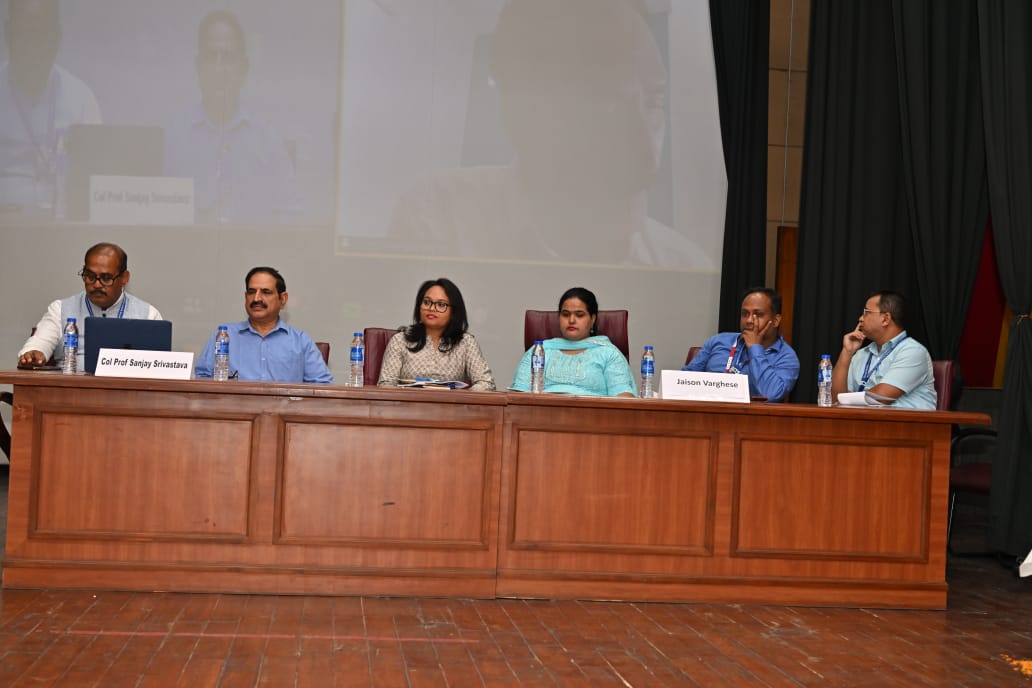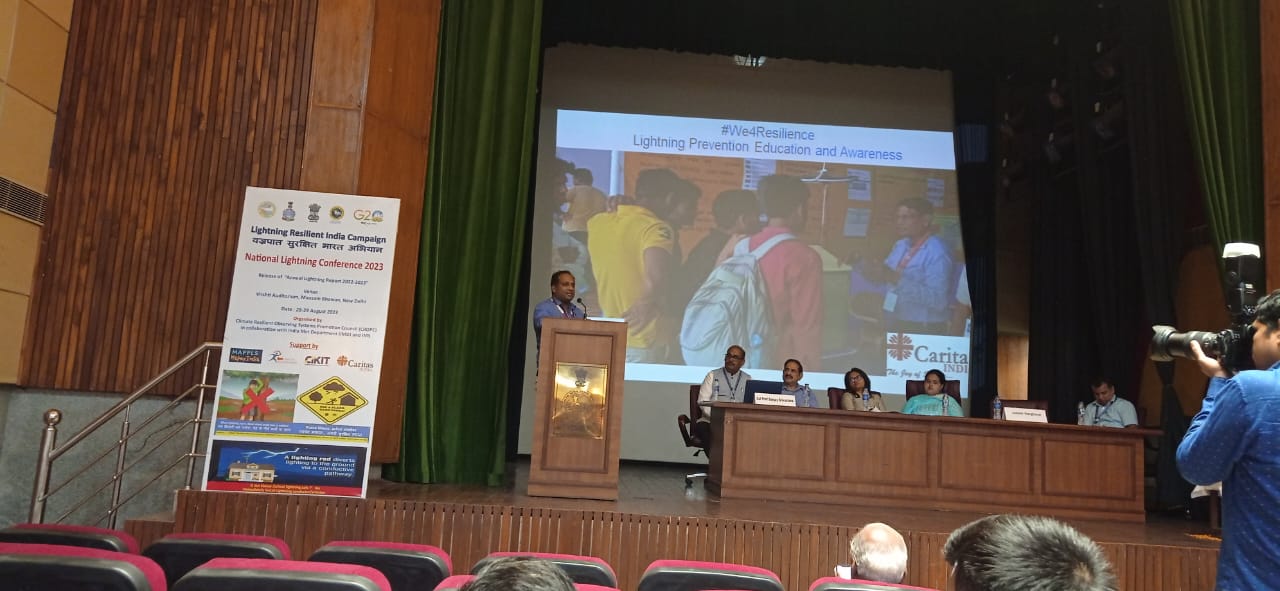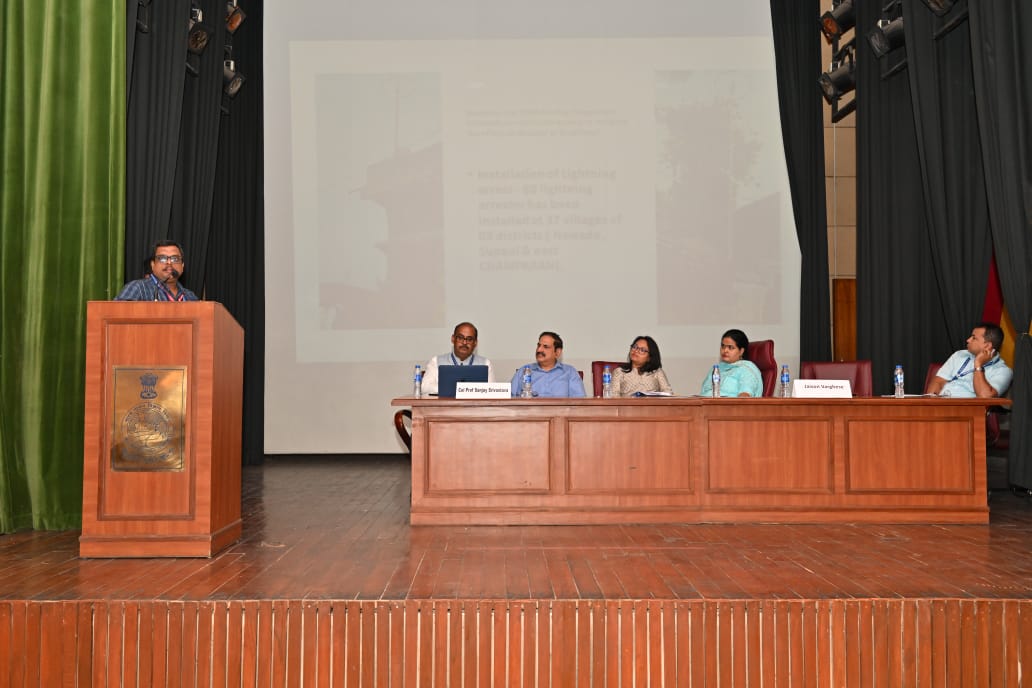Recent trends have shown a notable surge in lightning occurrences and fatalities. As per the observations by the Lightning Direction Network (LDN) of the Indian Institute of Tropical Meteorology (IITM), Ministry of Earth Science (MoES), National Remote Sensing Centre(NRSC), and Indian Space Research Organisation(ISRO), India has witnessed a continuous rise in lightning strikes. Annual Lightning Report 2023 highlights the overall rise in lightning Cloud to Ground (CG) flashes to 53% from 2019-2023. There are states with more than a 300% rise in lightning, and states like Bihar, Odisha, West Bengal, Madhya Pradesh, Jharkhand, and Maharashtra have been most affected by the rise in lightning mortalities. The socioeconomic vulnerabilities make it more impactful.
Caritas India’s Global Program by focusing on the Sendai goal to reduce the Global mortality due to disasters has concentrated efforts on lightening prevention and education activities in the program’s target villages. In partnership with and guidance from state disaster management authorities, local government, and civil society organizations, low-cost lightning arresting devices have been installed in the selected program villages in the Nawada district of Bihar.

Caritas India Global Program co-hosted a 2-day National Conference hosted by the Climate Resilient Observing Systems Promotion Council (CROPC) and India Meteorological Department (IMD), Ministry of Earth Science, Government of India on 28th and 29th August 2023 highlighting the importance of education and awareness as key to the lighting death prevention and reduction. The conference held in the Vrishti Auditorium, Mausam Bhavan, New Delhi discussed in depth lightning early warning and dissemination, lightning protection standards, public awareness of lightning, scope of research and development in this sector. The conference sessions were addressed by Col. Prof. Sanjay Srivastava, Director of CROPC, and other key officials such as the Deputy General of the Indian Meteorological Department, scientists, and professors from research and development organizations, universities, and corporations.

Dr. Jaison Varghese, Senior Program Lead, Caritas India’s Global Program spoke about Lightning Safety for Rural India and multi-level approaches and strategies to integrate Lightning awareness and education in the Disaster Risk reduction actions by bringing information education and communication (IEC) and risk transfer tools in the forefront of developmental interventions of Civil Society Organisations and local government.
In the presentation, Dr. Jaison highlighted that 96% of the lightning deaths are in rural India and 32% of the overall disaster deaths are due to lightning strikes. Also, 77% of them are farmers. It was also discussed that over 900 people died due to lightning strikes in Bihar in the last two-and-a-half years and lightning strikes claimed 5,706 lives in Odisha in 20 years and Assam is the ninth most lightning-prone state in India with many unreported cases.
The ongoing we4resilience campaign in Assam, Bihar, Odisha, and West Bengal spaced Lightning education and awareness with high priority, and over 3 lakh rural population is reached out with education and communication materials. The Samvad(community consultations) triggers the local government to incorporate the lightning prevention plan and actions in their risk-informed Gram Panchayat Development Plan.

Mr. Abhishek Kumar, Bihar State Lead, Disaster Risk Reduction for Caritas India’s Global Program presented a case study on the low-cost lightning arresters installed and promoted among the lightning-vulnerable areas in Bihar as a community-driven practice.
Caritas India’s session was concluded with the following way forward and recommendations:
- Introducing more low-cost lightning protection devices in the rural areas for the households and farmers which is to be validated by the research organizations. Caritas India and other Civil Society Organizations can lead the awareness and community mobilization actions in partnership with Government and scientific organizations.
- Houses, institutions, and flood and cyclone shelters are to be protected with lighting protection devices. For this, the risk-informed local government plans to be integrated with lightning risk reduction measures.
- Scope of convergence to be brought with high priority and PMAY house, ICDS centers, schools, etc. to be provided with lighting protection devices and measures.
- Risk transfer tools such as insurance are to be promoted.
- The CSOs working in the DRR sector need to mainstream lightning awareness in the programs and well-designed dedicated campaigns and joint studies to plan in partnership with expert organizations such CROPOC, IMD, SDMAs, etc.
- A community contingency plan for lightning awareness needs to be developed and local experts to monitor the plan.
- Environmental Education with lighting awareness is encouraged among the schools.


Leave a Reply